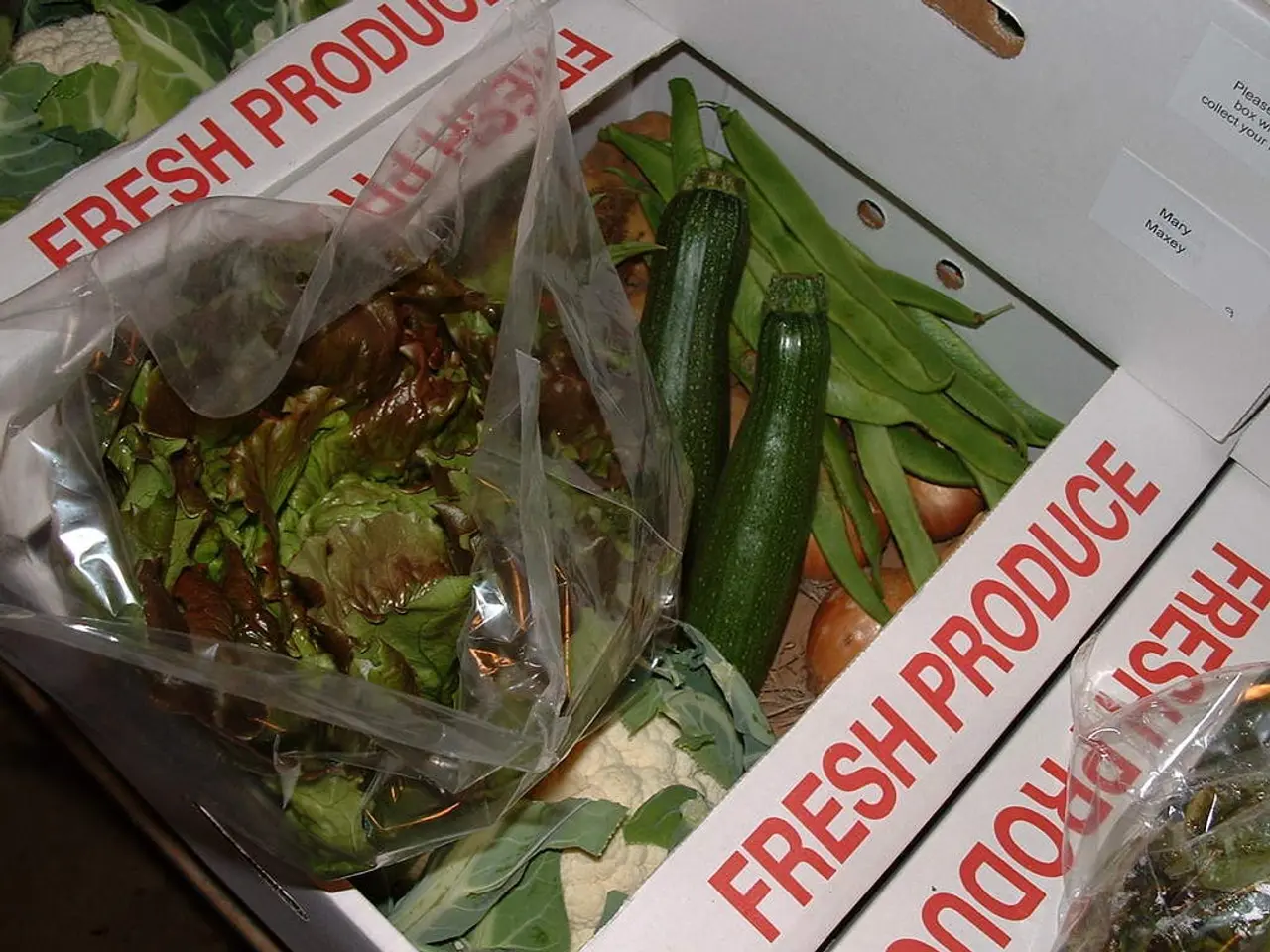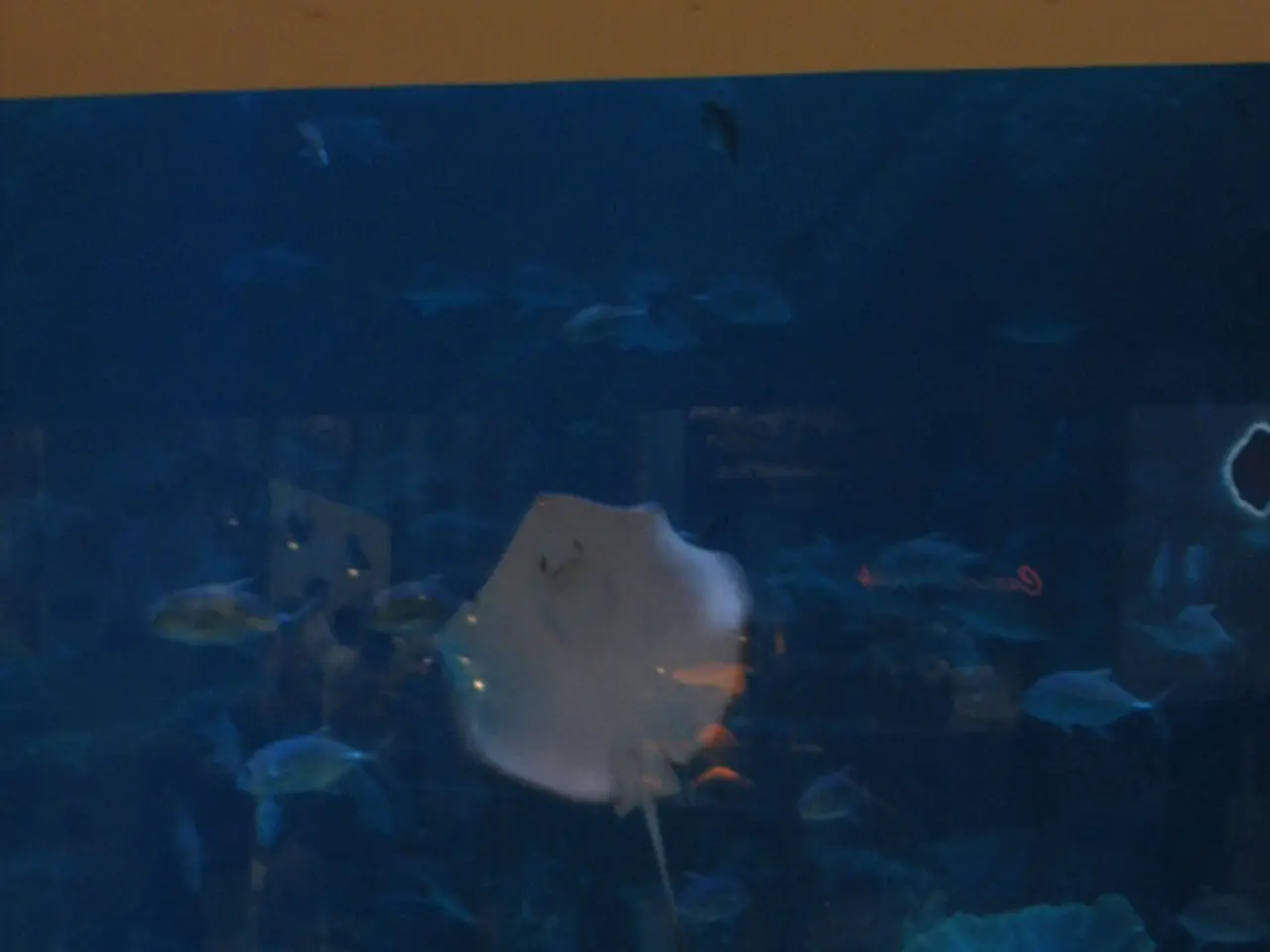Vegetable Conservation Through Freezing Technique
In the realm of food preservation, freezing vegetables is a popular method to maintain their freshness and nutritional value. Here's a step-by-step guide on how to properly freeze a variety of vegetables, ensuring they remain flavourful, colourful, and nutritious.
Boiling Water Blanching
To properly blanch common vegetables for freezing, immerse the vegetables briefly in boiling water or steam for a specific time tailored to each vegetable, then immediately transfer them to an ice water bath to halt the cooking process. After cooling, drain and dry them thoroughly before freezing.
Key steps include:
- Preparing the vegetables: Wash, trim, and cut vegetables into uniform pieces if necessary.
- Blanching: Submerge in boiling water or steam. Typical blanching times generally range from 1 to 5 minutes depending on the vegetable (for example, green beans are about 3 minutes, broccoli around 3 minutes; exact times may vary).
- Shocking: Immediately plunge vegetables into ice water for the same time as blanching to stop enzyme activity and cooking.
- Draining and drying: Drain well and air dry on a towel or rack to remove excess moisture.
- Freezing: Freeze in single layers on trays before packing into freezer-safe containers or bags, removing excess air to prevent freezer burn.
Blanching is vital because it halts enzyme activity that would otherwise degrade flavor, color, and texture during freezing and preserves nutrients[1][3][5]. Use enough boiling water so vegetables don’t cool the pot too much; leafy greens require more water. After blanching a few batches, replace the water to keep it boiling efficiently[3].
Different vegetables require different blanching times (generally 1-5 minutes), so consult a blanching time chart for specific vegetables for best results.
Maintaining Quality and Extending Storage Life
The more food put into a freezer in a year, the less the operating cost per pound. Keep an inventory and use the oldest foods first. Use frozen vegetables within one year.
Wash vegetables thoroughly in cold water, drain, and rinse several times. Cook frozen vegetables in 1⁄2 cup or less water per pint package to maintain nutrients.
Freezing vegetables preserves nutrients and provides a fresher flavor than canning or drying. Freezing vegetables in a single layer on a tray before packaging helps to retain quality. Choose young, tender vegetables for freezing.
Freezing Tips
Freeze only 2 to 3 pounds of food per cubic foot of freezer space in 24 hours. Blanching helps destroy microorganisms on the surface of the vegetable. Cool rapidly in ice water after blanching to stop the cooking process.
Freezing retards the growth of microorganisms and slows down chemical changes that might cause food to spoil. Proper handling of vegetables is important before freezing. Maintain freezer at 0°F or less to best protect the quality of foods, including vegetables.
Blanching makes vegetables more compact, taking up less room in the freezer. If power fails, keep freezer closed; food should stay frozen 24 to 48 hours.
For better color in mushrooms, dip them for 5 minutes in a solution of 11⁄2 teaspoons citric acid per 1 pint water before steaming. Some vegetables, such as green onions, lettuce, radishes, and tomatoes, do not make satisfactory products when frozen and should be stored for short periods in the refrigerator.
References: [1] National Center for Home Food Preservation. (2021). Freezing: Vegetables. https://nchfp.uga.edu/how/freeze/vegetables.html [3] United States Department of Agriculture. (2021). Blanching for Freezing. https://www.fsis.usda.gov/wps/portal/fsis/topics/food-safety-education/get-answers/food-safety-fact-sheets/safe-food-handling/blanching-for-freezing [5] National Health Service. (2021). Freezing food safely. https://www.nhs.uk/live-well/eat-well/freezing-food-safely/
Incorporating blanching techniques into a home-and-garden lifestyle can significantly enhance the quality and longevity of preserved fruits and vegetables. Blanching not only slows down chemical changes and the growth of microorganisms, but also helps retain the flavor, color, texture, and nutrients of various vegetables during freezing.




